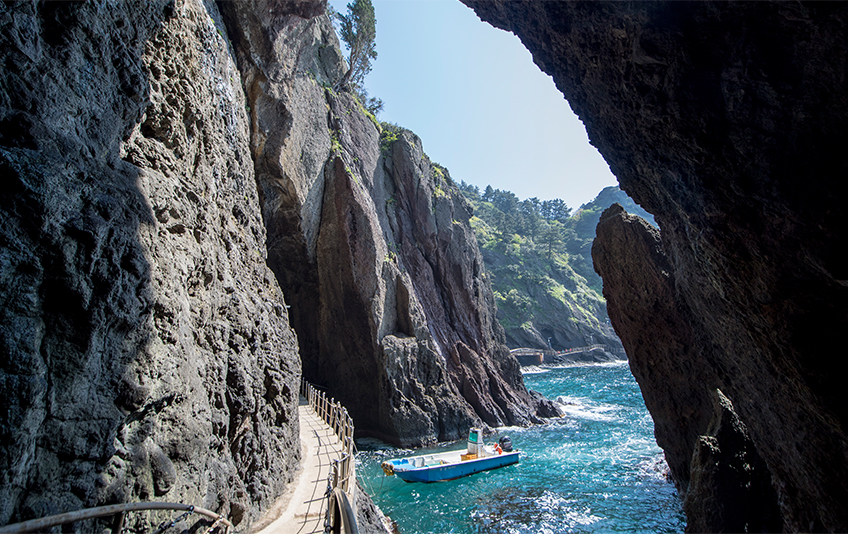Ulleungdo Island: Korea’s Volcanic Gem in the East Sea
Nestled in the deep blue waters of the East Sea, Ulleungdo Island is a remote, volcanic marvel that captivates travelers with its rugged cliffs, dense forests, and unique cultural heritage. Formed by ancient volcanic activity, this South Korean island remains a hidden treasure, largely untouched by mass tourism. Its isolation has preserved not only its pristine ecosystems but also traditions that date back centuries. From the haunting beauty of its crater lakes to the resilience of its tight-knit communities, Ulleungdo offers a rare blend of natural wonder and human history. This article delves into the island’s geological origins, ecological significance, cultural narratives, and the delicate balance between preserving its identity and embracing modernity.
A Landscape Forged by Fire and Water
Ulleungdo’s dramatic terrain is the result of volcanic eruptions that occurred approximately 2.5 million years ago. The island’s central peak, Seonginbong, rises 984 meters above sea level, surrounded by jagged coastlines and steep valleys. Unlike typical volcanic islands, Ulleungdo lacks sandy beaches, replaced instead by sheer basalt cliffs and sea caves carved by relentless waves. The crater lake, Nari Basin, now a fertile plain, hints at the island’s explosive past. Geologists prize Ulleungdo for its unique rock formations, including the hexagonal columnar joints at Bongnae Falls, which reveal the rapid cooling of lava. This geology sustains rare plant species and freshwater springs, making the island a living laboratory for volcanic ecosystems.
Biodiversity in Isolation
Ulleungdo’s isolation has fostered endemic species found nowhere else on Earth. Over 50 vascular plants, such as the Ulleungdo aster and tiger lily, thrive in its temperate climate. The island’s forests, dominated by cedar and fir trees, provide sanctuary for migratory birds and endangered insects. However, invasive species and climate change threaten this delicate balance. Conservation efforts, led by local communities and researchers, focus on protecting habitats like the Dodong-ri Wetland, a critical stopover for birds. The island’s marine ecosystem is equally rich, with kelp forests supporting abalone and octopus populations—key to the livelihoods of Ulleungdo’s fishermen.
Echoes of the Past: Culture and Community
Human settlement on Ulleungdo dates back to the Silla Dynasty, but its modern identity was shaped by 19th-century refugees fleeing mainland hardships. These settlers developed distinct traditions, such as Gasi (dried squid) production and folk songs recounting seafaring struggles. The island’s mythology, filled with tales of mountain spirits and sea demons, reflects its volatile environment. Today, aging populations and depopulation challenge cultural preservation. Yet, festivals like the Ulleungdo Squid Festival and efforts to document oral histories keep these traditions alive, blending ancestral pride with contemporary resilience.
Sustainable Tourism: Promise and Peril
Ulleungdo’s recent designation as a UNESCO Global Geopark has spurred tourism, offering economic hope but also environmental risks. Visitors hike the Dokkaebi Road for panoramic views, kayak around the iconic Elephant Rock, and savor local dishes like okdom (whitefish) stew. However, waste management and overtourism strain infrastructure. Locals advocate for low-impact tourism, promoting homestays and eco-tours. The challenge lies in honoring the island’s ethos of self-reliance while integrating into global networks—a tension that will define Ulleungdo’s future.
Conclusion: Preserving an Island’s Soul
Ulleungdo Island stands as a testament to nature’s power and humanity’s adaptability. Its volcanic origins, ecological treasures, and cultural narratives intertwine to create a place of profound beauty and fragility. As tourism grows, the island faces a crossroads: exploit its resources for short-term gain or prioritize sustainability to safeguard its legacy. The choices made today will determine whether Ulleungdo remains a sanctuary of biodiversity and tradition or succumbs to the pressures of modernity. For travelers and stewards alike, the island serves as a reminder that some gems are too precious to lose—and too rare to take for granted.
